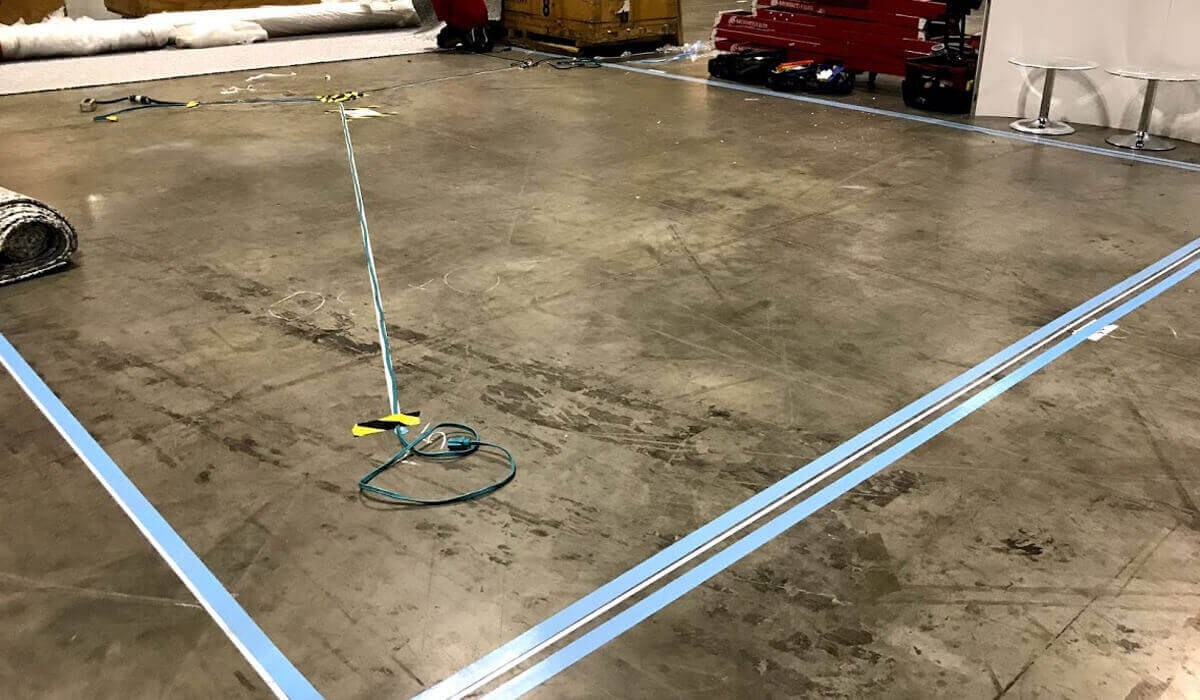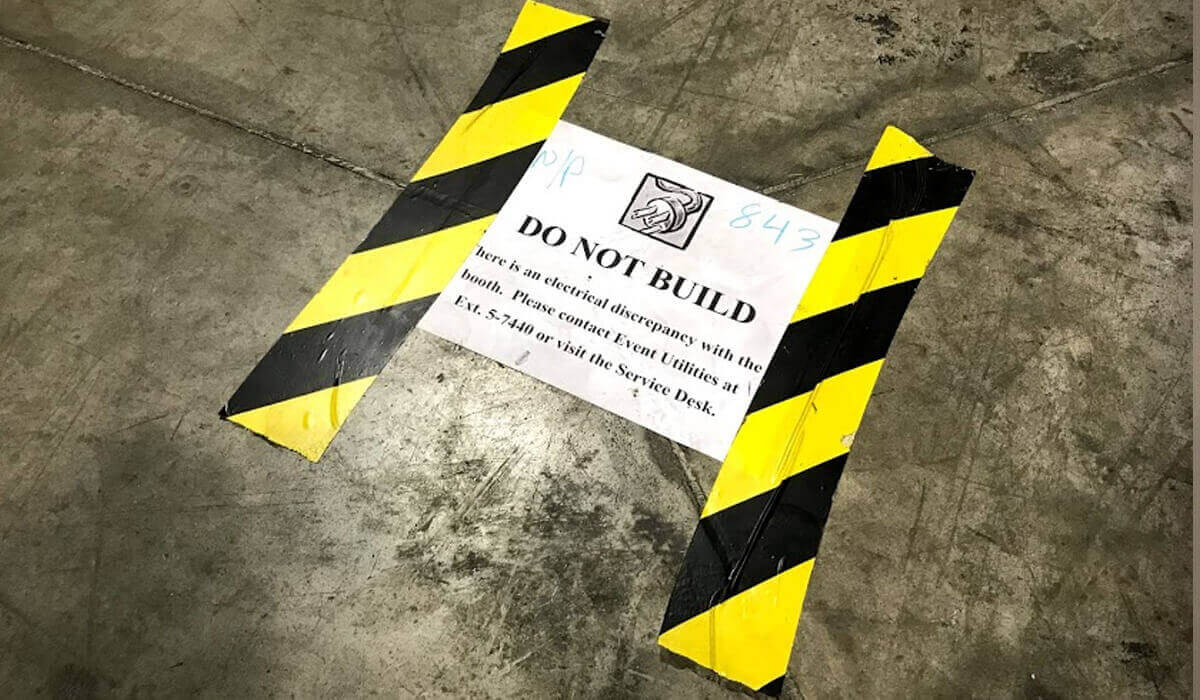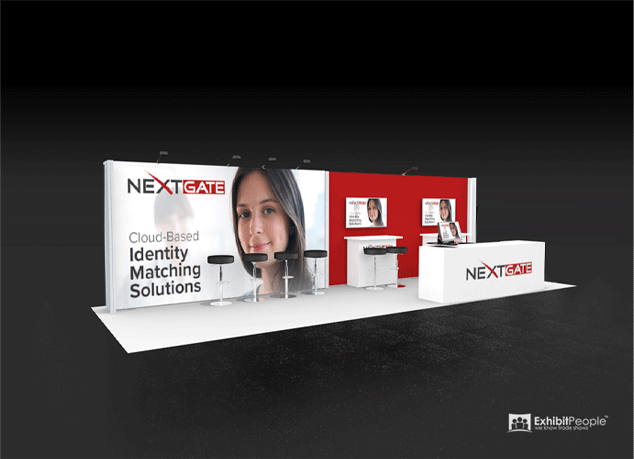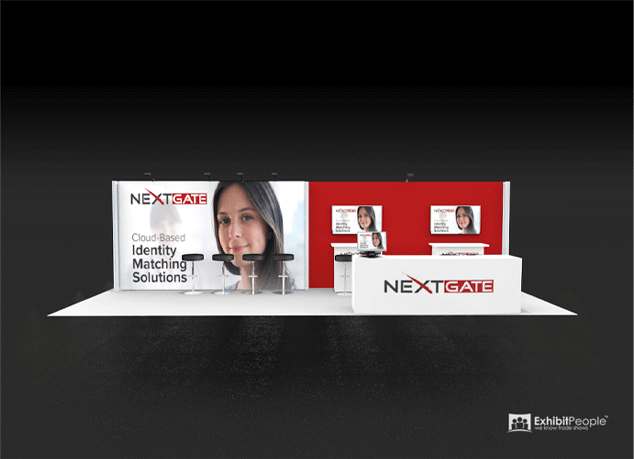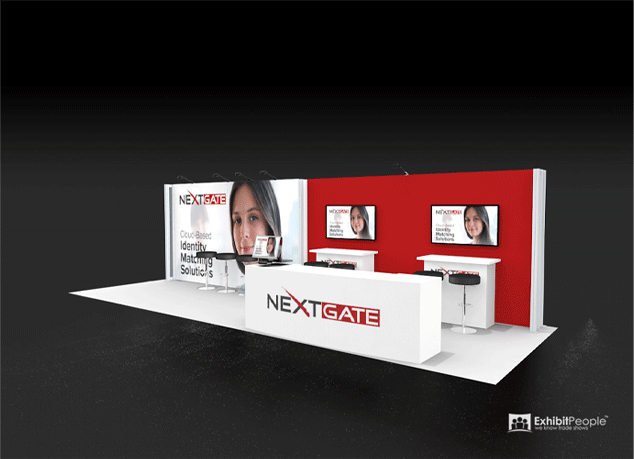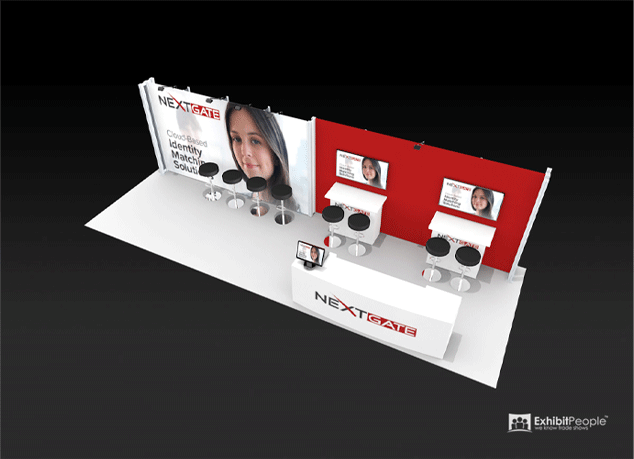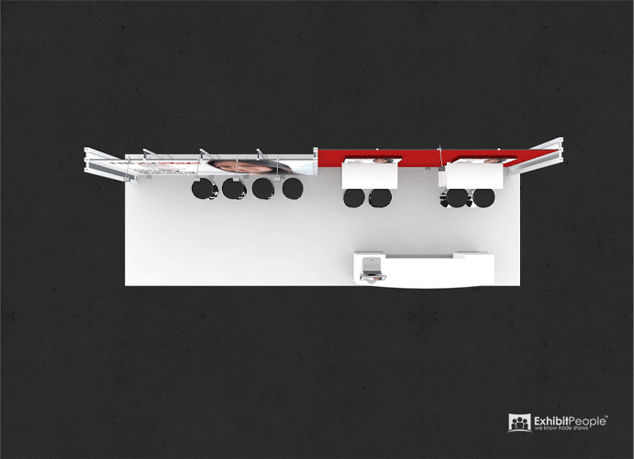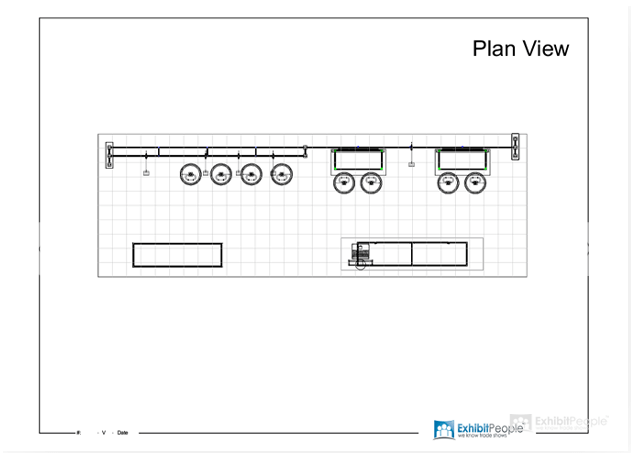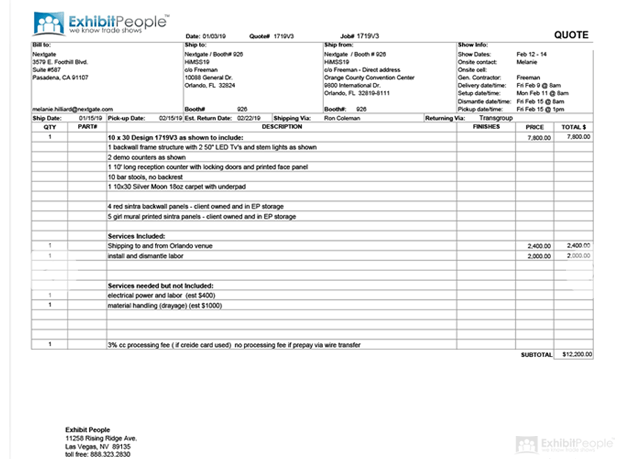Trade Show Electrical Tips
When it comes to electrical and electrician work for your trade show booth, there are ways to make sure you have the correct placement and amount of power ordered so that your install isn’t delayed. These trade show electrical tips can help you avoid delays and reduce costs.
Getting your electrical order and electrical drawings submitted on time is VERY important in making sure that your space is ready when your install team is ready. Remember all else depends on your electrical placement being correct and in place prior to your labor team even being able to install flooring. Yes, it’s THAT important!
Keep in mind that your drawings are printed and used by workers, so make sure they are clear and concise when printed. If the details and text are too small, electricians end up guessing, or worse they wait until set-up day for you to explain your drawing. Always follow up before each show to ensure that the facility has your electrical order and drawing and that there are no questions regarding either. Pro Tip: Depending on how tight your install schedule is, it might make sense for your to talk with one of the electrician leads to verify they have all they need for your power requirements.
There are two different types of electrical labor. “Floor Work” refers to how the power is run under the booth flooring and the man hours required to complete the running of extension cords to the various locations away from the main drop. “Booth Work” refers to making connections as needed during or after the booth construction. This is often hanging stem lights or TVs. Electricians want to make the final connections to ensure the proper materials and power are used to prevent fires or injury.
Lastly, 1000 watts equals 10 amps. This should be helpful in determining your power needs, as electrical power to the main drop of the booth is sold by these units. All devices, including TVs and computers generally list the power requirement on a product label. If not, its a quick easy Google search to see that a typical laptop requires approximately 65 watts of power to run. Pro Tip: Don’t forget the amount of power required by vacuums and charging devices.
We Help You Properly Order and Install Electrical
Before you install flooring, ensuring your trade show electrical is placed correctly and in working order. We measure and check electrical placement when we first arrive at the booth space. We test extension cords and outlets before covering with flooring and we unpack and stage all electrical items to minimize any electrician time required during the booth install.
Incorrect electrical placement can cause your install to come to a screeching halt while you wait for an electrician. For this reason, for EVERY show, we call Exhibitor Services, speak to a real person, and verify that the show has received the electrical order and drawing. We also take time to understand how power is coming into the booth. The 3 most common ways are from a ceiling drop, up from a floor plate, or across from a structural column nearby.
We actively work to avoid all the common electrical delays so the install can proceed smoothly. When things don’t go as planned, we know where to go and who to talk with to get things done as quickly as possible. This is one of the many benefits of renting a trade show booth that includes install services.
The most common way of ordering power is in terms of amps and watts. A good rule of thumb is 1 amp is equal to 100 watts. 20 Amps are equal to 2000 watts and so on. You can Google to see the wattage requirement for computers and TVs and easily estimate the total watts your booth will require.
Routing power from your main drop to various locations within your booth space will require extension cords (see floor work above). Keep in mind that many shows require a minimum of 500 watts associated with each extension cord. It’s common to have 3-4 extension cords routed on the floor to counters and rooms in your booth space. You will be charged for the rental of the extension cords, power strips and the usage of the tapes or other supplies used to complete your installation as ordered.
Here’s what matters:
- Order before Advance Pricing deadline
- Make sure your layout matches your order
- Double check your electrical before booth install
- Comply with union rules

